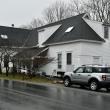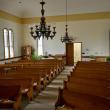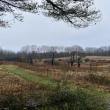And back to Edgecomb we go
 The building that once served as Eddy School is now home to Edgecomb Green, an assisted living residence for senior citizens. PHIL DI VECE/Wiscasset Newspaper
The building that once served as Eddy School is now home to Edgecomb Green, an assisted living residence for senior citizens. PHIL DI VECE/Wiscasset Newspaper
 The interior of Edgecomb Community Church as it now looks with its original oak pews and oil-burning chandeliers that were converted to electricity. PHIL DI VECE/Wiscasset Newspaper
The interior of Edgecomb Community Church as it now looks with its original oak pews and oil-burning chandeliers that were converted to electricity. PHIL DI VECE/Wiscasset Newspaper
 Singing Meadows, a gift from the late Dr. Pauline “Polly” Tompkins to Boothbay Region Land Trust. PHIL DI VECE/Wiscasset Newspaper
Singing Meadows, a gift from the late Dr. Pauline “Polly” Tompkins to Boothbay Region Land Trust. PHIL DI VECE/Wiscasset Newspaper
 The Eddy School as it looked when I first saw it in the spring of 1979. Phil Di Vece photo
The Eddy School as it looked when I first saw it in the spring of 1979. Phil Di Vece photo
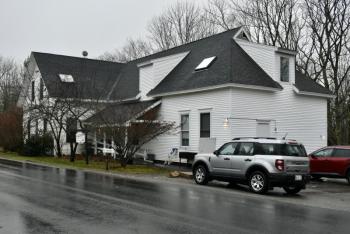 The building that once served as Eddy School is now home to Edgecomb Green, an assisted living residence for senior citizens. PHIL DI VECE/Wiscasset Newspaper
The building that once served as Eddy School is now home to Edgecomb Green, an assisted living residence for senior citizens. PHIL DI VECE/Wiscasset Newspaper
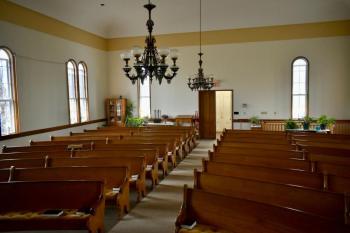 The interior of Edgecomb Community Church as it now looks with its original oak pews and oil-burning chandeliers that were converted to electricity. PHIL DI VECE/Wiscasset Newspaper
The interior of Edgecomb Community Church as it now looks with its original oak pews and oil-burning chandeliers that were converted to electricity. PHIL DI VECE/Wiscasset Newspaper
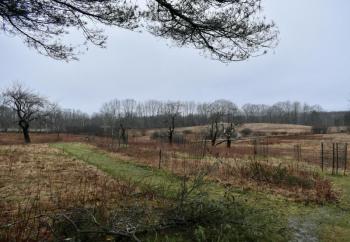 Singing Meadows, a gift from the late Dr. Pauline “Polly” Tompkins to Boothbay Region Land Trust. PHIL DI VECE/Wiscasset Newspaper
Singing Meadows, a gift from the late Dr. Pauline “Polly” Tompkins to Boothbay Region Land Trust. PHIL DI VECE/Wiscasset Newspaper
 The Eddy School as it looked when I first saw it in the spring of 1979. Phil Di Vece photo
The Eddy School as it looked when I first saw it in the spring of 1979. Phil Di Vece photo
Let’s return again to the quiet community of Edgecomb where our neighbors across the Sheepscot River are celebrating their Semiquincentennial, that is to say the town’s 250th birthday. We’re going to have to get used to saying Semiquincentennial, or “Semiquin” for short because July 4, 2026 our nation will celebrate its own 250 anniversary of the signing of the Declaration of Independence.
In February I shared with you a number of historical facts and points of interest in Edgecomb. Since then, as reported in this newspaper, the community has hosted a birthday gathering at its historic town hall. This time around, I thought I’d tell you about several places in town you may have passed dozens of times without ever giving a second thought to.
Let’s begin with Edgecomb Green, an assisted living facility for senior citizens. The well-cared for building on Cross Point Road is next door to the historic Edgecomb Community Church, which I’ll get to in a minute. Long before senior residents were calling Edgecomb Green home sweet home, generations of boys and girls were learning their ABCs here. The building was Eddy School, aka Central School Dist. No. 1 for 145 years. In fact, before it closed in December 2002, it was Maine’s oldest continuously used school building. It was built from lumber milled in town in 1857 for the sum of $1,000; Charles Dodge of Newcastle was its builder. When it first opened its double doors for learning, boys and girls were separated in the classroom. An indoor privy was added in 1880 and, five years later, for $11, the town hired a mason to build a brick chimney for the school’s wood-fired stove. Among the school’s early teachers was Daniel Dodge; he was hired to teach the winter term for $2.25 a week and room and board.
In more recent times, students from kindergarten to grade six attended the school, among them my niece who went there in the 1980s. My wife, Marjorie, said she attended Eddy School too in the 1960s, her parents having sent her there for summer school to be tutored in reading. She along with Dean her brother walked over a mile to the school house from their cottage on Davis Island. “Back then, if the weather was nice it was nothing for kids to walk,” or so she tells me. At the very least, I personally would have ridden a bicycle.
Chip Davison, owner of Davison Construction in Wiscasset, attended the Eddy School along with his sisters Beth and Heather Davison. “I went there from 1968 to 1974. Like most of the other kids I went to Wiscasset Middle School after I finished sixth grade. I can tell you there wasn’t a lot of space inside the Eddy School, just the three classrooms, bathrooms and the hallway on the main floor.” The grades were combined, continued Chip. First and second graders were taught together in one room, third and fourth graders in another, with fifth and sixth grades combined in the third room. Eventually school officials converted what had been the upper floor into learning space for the kindergarten.
“There wasn’t a gymnasium, we played outdoors when the weather was nice. We ate our lunch outdoors too, or sat at our desks in the classrooms because there wasn’t a cafeteria or kitchen. All we had was a refrigerator where they kept the cartons of milk they gave us.” Chip was pretty sure hot lunches for the kids were later made available next door in the church vestry. Some of the teachers who taught at the Eddy School were Terry Tatlock, Elenor Goggins and Dawn Garey, Mrs. Garey being in charge of the kindergarten and pre-school.
“The principal when I went there was Mrs. Anne Watson. My folks knew her pretty well because she lived just a little ways down the River Road from where I grew up.” The Davisons owned the Merry Barn located across the road from their home that now serves as a writer’s retreat and gathering place. The Merry Barn was the scene of many contra dances in the 1960s where couples gathered to swing their partners to foot-stomping music with Howie Davison, Chip’s father, serving as “caller.”
As the saying goes, “All things must pass,” and Eddy School closed after the new K-6 elementary school, Edgecomb Eddy School, opened on Route 27.
Now some facts concerning Edgecomb Community Church, formerly the Congregational Church of Edgecomb and still a member of the United Church of Christ. The building has been listed on the National Register of Historic Places since 1987, the church having been raised in 1877. Its landmark white steeple which can be seen from Wiscasset harbor is topped with a weather vane manufactured sometime in the 1880s. The weather vane was the handiwork of W.A. Snow Iron Works, which once upon a time was located on Portland Street in Boston’s West End. Its unusual-looking pointer, made to resemble a fish, was fully restored along with its four compass points in 1990. The late Roger Majorowicz of Whitefield, a noted metal sculptor, did the restoration. (You can read more about Roger Majorowicz and his distinctive art work in an earlier Salt ’n Spar column.) Made of copper, bronze and iron, the weathervane’s pointer and compass points were originally gilded in gold leaf. An old W.A. Snow & Company catalog indicates this style of weathervane originally sold for about $50, plus shipping. The weather vane was restored with monies from the John Chase Memorial Fund. Along with being a lifelong church member, John Chase was for many years the Edgecomb columnist for the Boothbay Register-Wiscasset Newspaper.
The original bell in the church steeple continues to be rung Sunday mornings at 9:30. I can’t tell you a great deal about the bell, where and when it was cast. I once rang it when the regular “bell ringer” was unavailable. It’s rung seven times at the start of the service, although no one seems to know why that number was chosen. When the bell sounds it can be heard as far as Edgecomb Town Hall and echoing along the riverfront. The wooden pews within the sanctuary are made of northern red oak, common to Maine and most likely milled locally. Hanging from the ceiling are two original brass chandeliers.
Within walking distance of Edgecomb Green and the church is Singing Meadows, a 16-acre pasture that was a gift to Boothbay Region Land Trust from the late Pauline Tompkins, a distinguished scholar and passionate believer in conservation. For many years, Ms. Thompkins resided in the rambling farmhouse across the road where she hosted summer family reunions. Her spacious home with its exceptional library overlooked the gently sloping meadow that she loved so dearly. Dr. Tompkins, (she told me several times, she much preferred being called “Polly”) earned her M.A. and Ph.D. from the Fletcher School of Law and Diplomacy at Tufts University in 1948.
She compiled quite a resume during her long career. Here are just a few of the highlights. Dr. Tompkins was a member of the Committee for Education, a part of President John F. Kennedy’s Commission on the Status of Women. In 1964, President Lyndon B. Johnson appointed her to serve on the nine-member United States Advisory Commission on International Education and Cultural Affairs. From 1967 until 1978, she served as President of Cedar Crest College, a 4-year liberal arts college for women in Allentown, Pennsylvania.
During her long life,Polly visited all 50 American states, and traveled around the world visiting Australia, New Zealand, southeast Asia, South Africa, the Middle East, the former USSR, Europe, and both Central and South America. I just learned recently that Dr. Tompkins had been awarded 11 honorary degrees including L.L.D. degrees from Hood, Mount Holyoke, Western and Wilson Colleges, and an L.H.D. from Muhlenberg College. The Polly Tompkins Award for Distinction in Political Science was established in 1970 at historic Pine Manor College in Brookline, Massachusetts. This last bit of information was included in a tribute to Dr. Thompson published by Cedar Crest College following her passing. Scholar, college president, dean of students, historian, writer, professor, political scientist, conservationist, Pauline “Polly” Tompkins passed away peacefully in Edgecomb at the age of 86 in November 2004.
Since Edgecomb’s early days this neighborhood near the junction of Eddy and Cross Point roads has been known as Cross Point-Madockawando and is one of five sections making up the town. The other sections include the Eddy at Davis Island, Mount Hunger Region, Parson’s Point which is along Parson’s Creek, and East Edgecomb where Merry Island and Poole’s Landing are. There’ll be more to come. I promise.
Phil Di Vece earned a B.A. in journalism studies from Colorado State University and an M.A. in journalism at the University of South Florida. He is the author of three Wiscasset books and is a frequent news contributor to the Boothbay Register-Wiscasset Newspaper. He resides in Wiscasset. Contact him at pdivece@roadrunner.com





